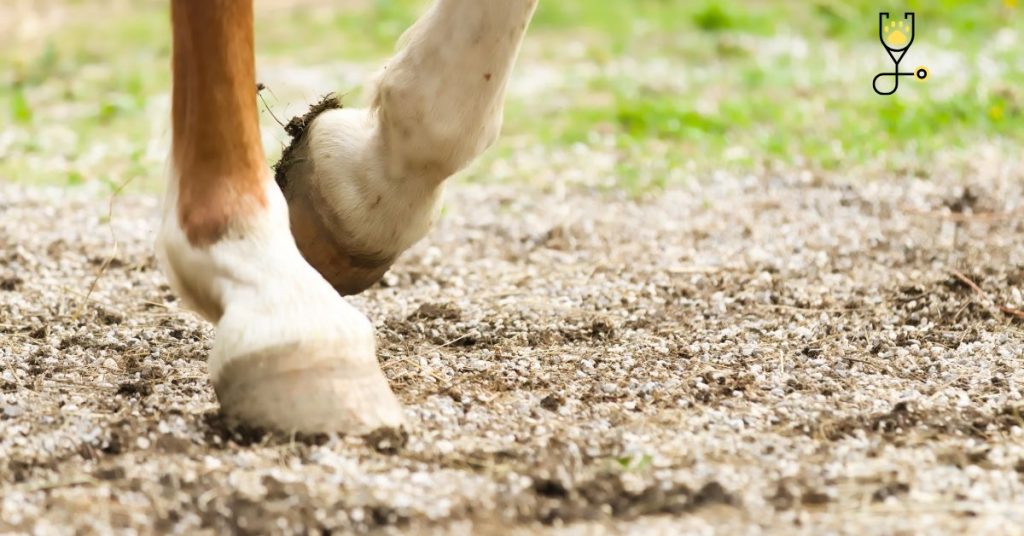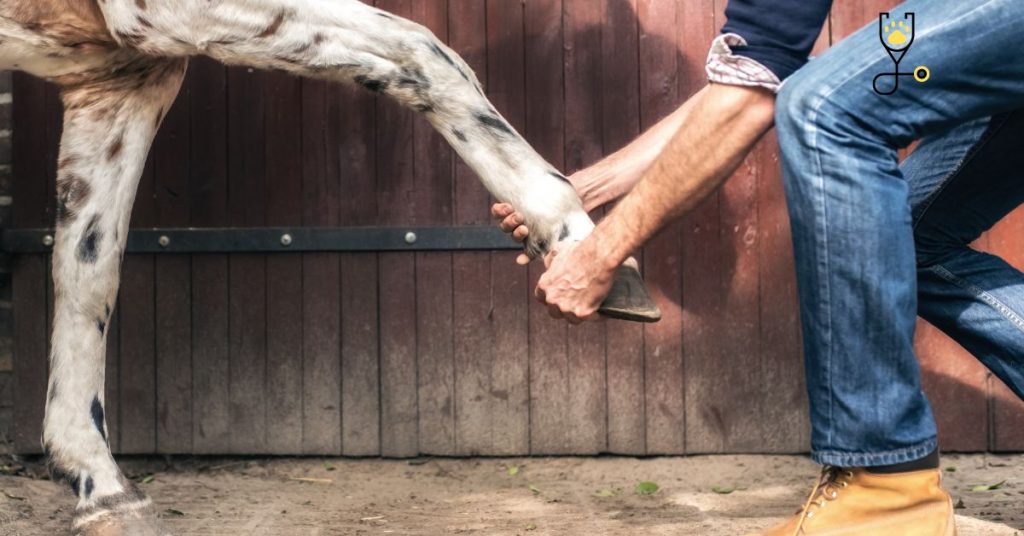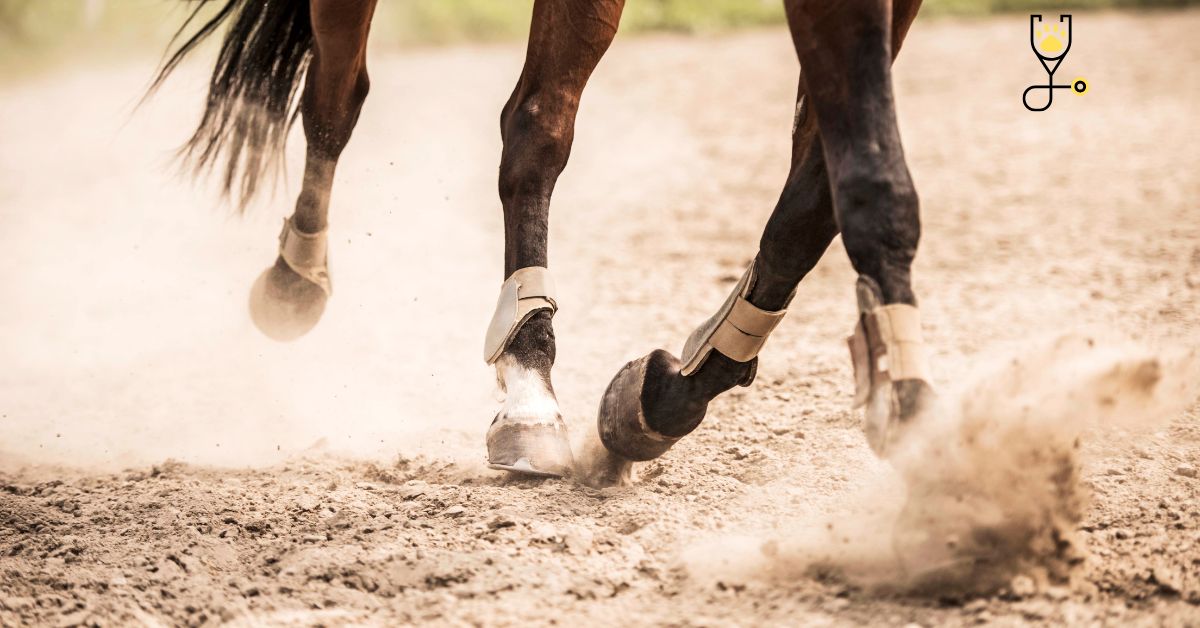As a responsible pet owner, it’s important that you can tell when your pet is in pain and needs medical attention. This blog post will teach you how to determine if a horse is lame on a front or back leg. Horses are prey animals, so they are often very good at hiding their pain, so it’s important to be able to identify the symptoms early on. If you suspect that your horse might be lame, please take him or her to the vet as soon as possible for an evaluation. Thank you for reading.
1. Look at the horse’s gait
Gait is the pattern of movement of the horse’s limbs. If a horse is lame, you will likely see a change in the gait. The horse may have a shortened stride, may be reluctant to move, or may favour one leg over the other.

2. Look for signs of discomfort
Horses in pain often exhibit signs of discomfort, such as pawing at the ground, tossing their head, or pinning their ears back. If you see your horse doing any of these things, it’s a good idea to take him or her to the vet for an evaluation.
3. Check for swelling or heat
Swelling and heat are often signs that something is wrong with a horse’s leg. If you see either of these, please take your horse to the vet as soon as possible.
4. Check for lameness
Lameness is a change in the way a horse moves that is caused by pain. If you think your horse might be lame, please take him or her to the vet right away.
5. Look for changes in behaviour
Horses in pain often exhibit changes in behaviour, such as being more aggressive or withdrawn than usual. If you see any changes in your horse’s behaviour, please take him or her to the vet for an evaluation.
6. Examine the affected area
If you suspect that your horse is lame, it’s important to examine the affected area carefully. Look for signs of swelling, heat, redness, or anything else that looks unusual. If you see anything that concerns you, please take your horse to the vet right away.
7. Check for a limp
If your horse is lame, he or she may have a limp. This is often the most obvious sign that something is wrong. If you see your horse limping, please take him or her to the vet right away.

8. Look for muscle atrophy
Muscle atrophy is a condition that can occur when a horse doesn’t use a leg properly. If you see that one of your horse’s legs looks thinner than the other, please take him or her to the vet for an evaluation.
9. Observe the horse’s reaction to touch
Horses in pain often react negatively when their affected area is touched. If you notice your horse flinching or trying to move away when you touch him or her, please take him or her to the vet right away.
10. Have your vet check the horse
If you suspect that your horse is lame, the best thing you can do is have a vet check him or her out. The vet will be able to tell you for sure if your horse is lame and will be able to provide treatment if necessary.
What Are The Reasons For A Horse To Be Lame?
There are many reasons why a horse might be lame. Some of the most common causes of lameness include:

-Injury
-Arthritis
-Disease
-Abscesses
-Hoof problems
-Laminitis
If you think your horse might be lame, please take him or her to the vet right away for an evaluation. Early diagnosis and treatment are essential for ensuring a healthy and happy life for your horse.
Conclusion
If you think your horse might be lame, there are several things you can do to check. First, look at the horse’s gait and see if there is a change. Next, look for signs of discomfort, such as pawing at the ground or tossing their head. You should also check for swelling or heat in the affected area. If you see any of these things, please take your horse to the vet right away for an evaluation. Early diagnosis and treatment are essential for ensuring a healthy and happy life for your horse. Thank you for reading!
Frequently Asked Questions
1. What are the signs of a lame horse?
The most common signs of a lame horse are a change in gait, discomfort, swelling, heat, and limping. If you see any of these things, please take your horse to the vet right away for an evaluation.
2. What are the reasons for a horse to be lame?
There are many reasons why a horse might be lame. Some of the most common causes of lameness include injury, arthritis, disease, abscesses, hoof problems, and laminitis. If you think your horse might be lame, please take him or her to the vet right away for an evaluation.
3. Can lameness be cured?
Lameness can often be cured with early diagnosis and treatment. However, in some cases, lameness may be permanent. If you think your horse might be lame, please take him or her to the vet right away for an evaluation.
4. How can I prevent my horse from becoming lame?
There are several things you can do to help prevent your horse from becoming lame. First, make sure to keep up with their vaccinations and health check-ups. Second, watch for signs of injury or illness and take them to the vet right away if you see anything out of the ordinary. Finally, maintain a healthy diet and exercise plan for your horse to help keep them strong and healthy.
5. What should I do if I think my horse is lame?
If you think your horse might be lame, the best thing you can do is have a vet check him or her out. The vet will be able to tell you for sure if your horse is lame and will be able to provide treatment if necessary. Early diagnosis and treatment are essential for ensuring a healthy and happy life for your horse.
6. My horse is lame. What now?
If your horse is lame, the best thing you can do is take him or her to the vet right away for an evaluation. The vet will be able to tell you what the cause of the lameness is and will provide treatment if necessary. Early diagnosis and treatment are essential for ensuring a healthy and happy life for your horse.





